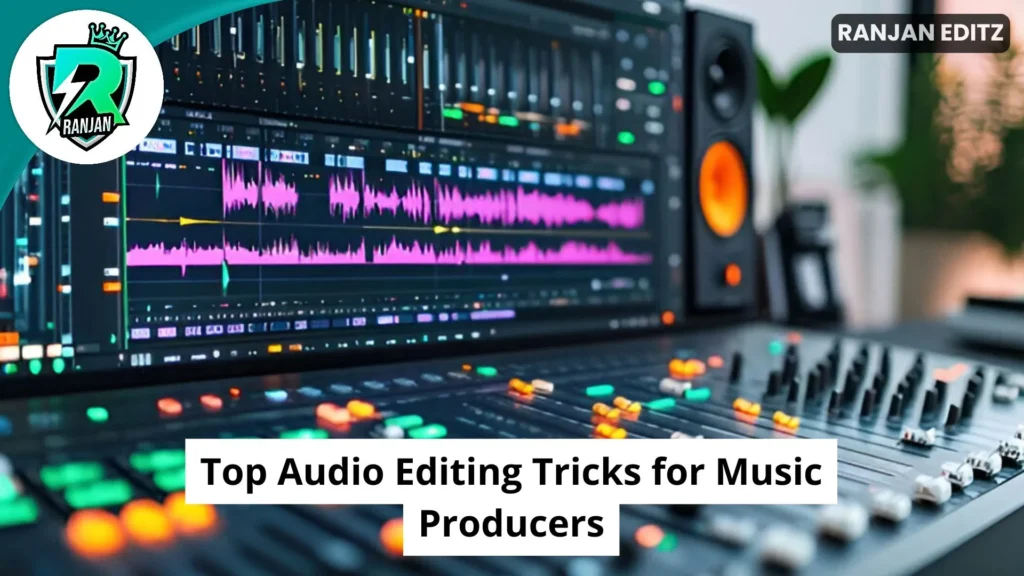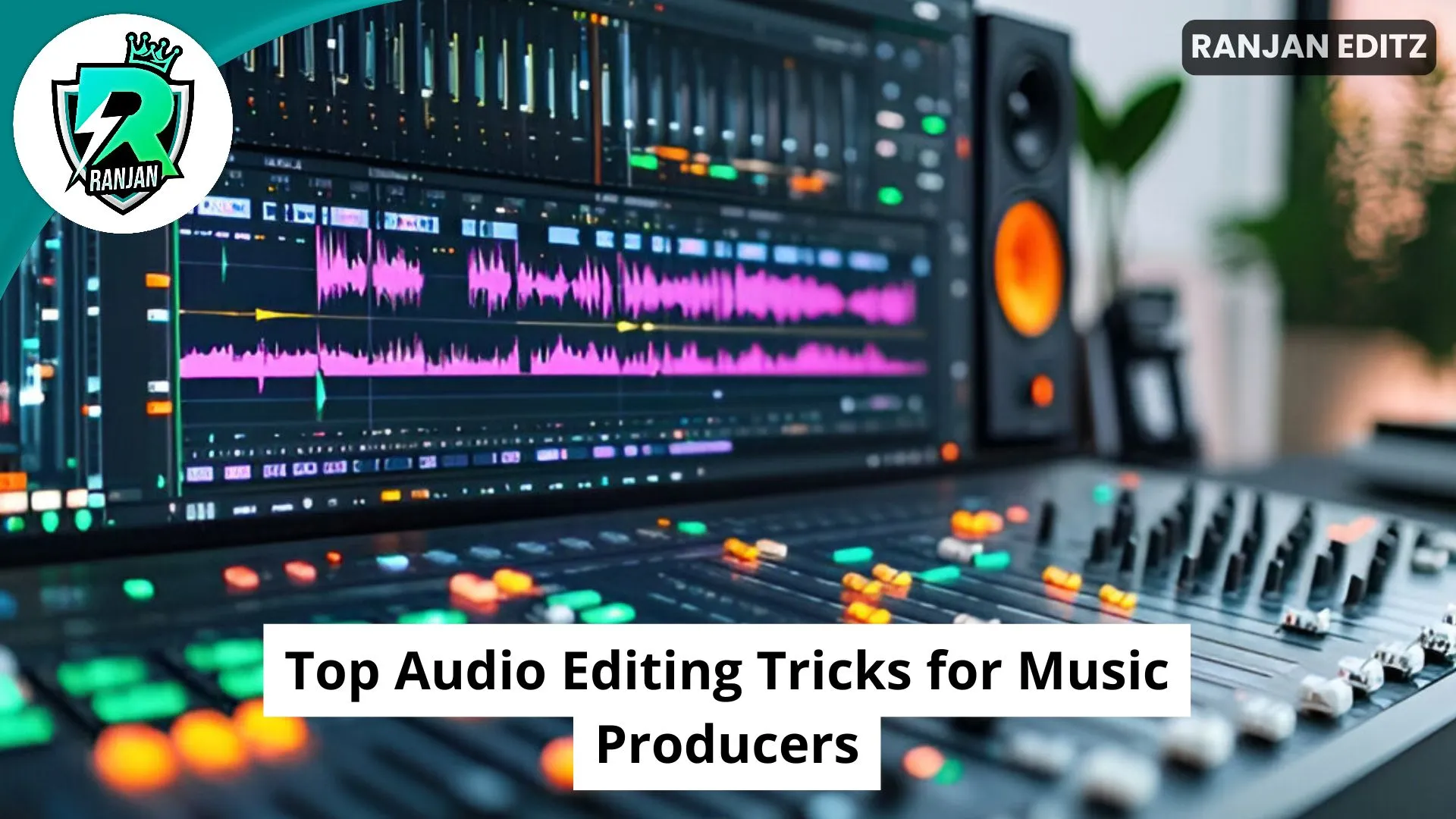These are the essential audio-editing techniques which music creators should master
Technical skills alongside creativity form the bases for music production as a creative art. Audio editing stands as one of the essential elements which determines the quality of produced music. The following article explains important audio editing techniques for music producers to achieve better sound quality and better workflow while delivering professional results.

Table of Contents
1. Using Equalization (EQ) Effectively
Effective equalization (EQ) stands as a primary essential trick when audio editing for musicians. Audio Equalization enables sound balancing and sound removal which includes mix level refinement until it achieves professional quality. Three essential EQ procedures include the following:
Music producers should remove low frequencies from instruments that lack bass sound in order to prevent muddiness in their mixes.
High-pass filters will remove any rumble that does not enhance the recording.
Enhance the vocal frequencies which reside in the midrange spectrums for higher clarity.
You should prevent applying overboosting due to distortion effects on your tracks.
2. Noise Reduction for Cleaner Audio
Outwear noise will ruin an otherwise excellent track. Music producers commonly address audio problems with background noise along with hums and hisses. Music Producers who utilize noise reduction features within DAW tools especially in Adobe Audition Audacity and FL Studio gain access to one of the best Top Audio Editing Tricks for their work.
Steps to Reduce Noise:
- Record in a quiet environment.
- Noise gates should be used to remove background noise when parts of the recording remain silent.
- Music producers should utilize noise reduction plugins for cleaning their recorded audio.
- The application of spectral editing tools enables producers to eliminate particular frequency ranges which they want to remove.
3. Creating depth along with fullness emerges through sound layering techniques
Music producers can achieve powerful results from audio editing through the technique of layering which stands at the top of these effectiveness strategies. Multiple layers of similar elements when combined together through this technique create deep and enriched sound depth.
Tips for Effective Layering:
- Played harmoniously two different instruments will build fullness to the sound.
- The adjustment of sound pan settings will produce width that enhances mix layout.
- Mixing your source elements from soft to hard sections will build a complex sound profile.
- Producers should set phases in alignment position to prevent destructive interference effects.
4. The development of flawless Time Stretching and Pitch Shifting techniques
MPG producers frequently need to solve the problem of matching their recorded samples with precise music tempos and pitches during production. To achieve professional results Music Producers should master time stretching and pitch shifting techniques which deliver high-quality sound output.
Techniques:
High-quality stretching and pitching algorithms should be used to prevent artifacts from appearing.
Music producers can modify individual formant frequencies for creating natural sounding pitch transformations.
To achieve musical cohesion the vocal pitch must match the melody notes of instruments.
Sound designer should conduct time stretching experiments to create novel creative elements.
5. Utilizing Automation for Dynamic Control
The practice of automation enables cutting-edge advancements in contemporary music production. The functionality lets music producers establish time-based variations for volume levels and both panning pan and effect changes. The Top Audio Editing Tricks for Music Producers include automation at a ranking position.
Automation Techniques:
Automation provides the ability to generate smooth transitions between different volume levels.
You should modify EQ parameters throughout time to develop evolving audio environments in production.
Music creators should use effects modulation to achieve dynamic variations of delay and reverb complexity.
Sidechain compression produces rhythmic effects that smooth the signal.
6. Creative Use of Reverb and Delay
The two essential effects which enhance track depth through ambiance are reverb and delay. Music producers must learn to properly utilize these effects because it becomes one of their essential editing skills.
Best Practices:
When you need sounds to remain specific in focus you should select short reverb times.
Reverb should be set to long durations when working with ambient atmospheric soundscapes.
Performance of delays at different length periods will allow you to produce rhythmic echo effects.
Add pre-delay during production to keep vocals along with lead instruments distinct.
7. Enhancing Transients with Compression
Mix control and transient enhancement require compression in the production process. Mastering compression stands as one of the Top Audio Editing Tricks for Music Producers because it allows music producers to obtain professional sounding mixes.
Compression Techniques:
A fast attack parameter serves to maintain control over sudden loud bursts.
Parallel compression technology allows you to gain punch while preserving the original dynamics.
Adjust the release parameter when you want to preserve natural sounding audio.
A lifeless mix results from applying excessive compression to the mix.
8. Mixes need Stereo Imaging as a vital technique to achieve a wide range
Widening a mix into a roomy space stands as one of the key methods described in the Top Audio Editing Tricks for Music Producers. Stereo imaging methods distribute different elements throughout the stereo space to enrich audio tone quality.
Stereo Imaging Tips:
Different elements need to be panned across the stereo field to build space in the mix.
Be cautious when utilizing stereo expansion plugins because their improper use leads to phase problems.
Bass frequencies should remain directly in the mix center for better understanding.
During audio production double up vocal and instrumental tracks to create more stereo width.
9. Editing MIDI for Precise Performance
The ability to edit MIDI becomes essential as a music producer for creating professional audio. You can obtain recordings with better natural expression when you precisely refine your MIDI performance output. All music producers should master MIDI editing because it belongs to the top techniques for audio refinements which elevate musical production standards.
MIDI Editing Tips:
Assist the human feeling by performing note quantization.
A producer should modify velocity patterns to produce varied dynamic levels.
Layer different sounds for a richer composition.
Expressions through MIDI automation enhance the technical elements of your performances.
10. Gaining Control Over Your Track Leads to a Professional-Sounding Conclusion
Production ends with master level processing. Among the Top Audio Editing Tricks for Music Producers stands knowledge of mastering tracks to achieve maximum clarity and optimal loudness.
Mastering Techniques:
A limiter should be used to secure competitive sound levels.
Adjust the equalization with minimal intensity to achieve balance between all tones.
You should use multi-band compression tools to achieve better dynamic control.
The mix achieves balance through references to professional tracks.

